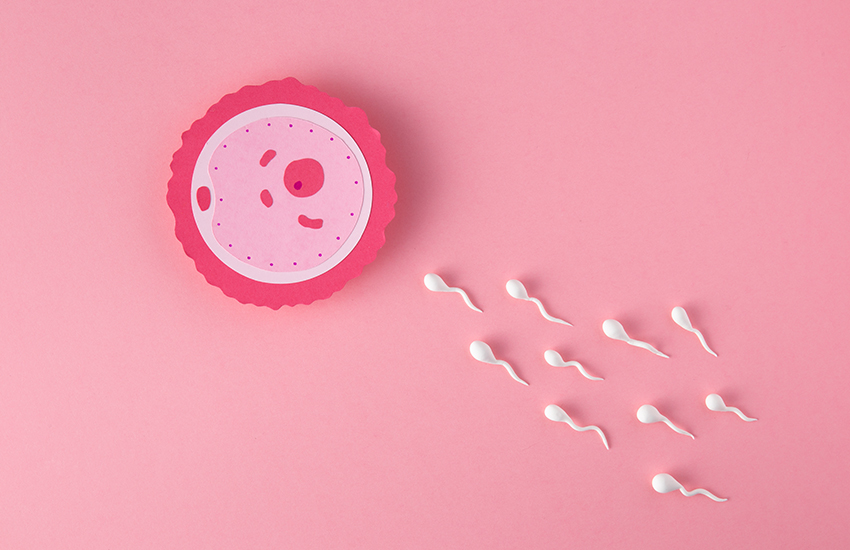Understanding Conception

Understanding conceptionis crucial for anyone looking to conceive. Natural conception is a complex process involving the brain, ovaries, and uterus, all working in harmony. Each month, these organs undergo a series of changes to prepare for a potential pregnancy. The brain sends signals to the ovaries to mature an egg, which is then released during ovulation. If conception occurs, the uterus is ready to support the developing embryo.
This blog will explore the detailed processes and interactions that make conception possible, providing you with a comprehensive understanding of fertility.
The Basics of Conception
Natural conception is a finely-tuned process involving the brain, ovaries, and uterus. Each month, these organs interact in a cyclical manner to create the conditions necessary for pregnancy. The process begins in the brain, where the hypothalamus and pituitary gland release hormones that signal the ovaries to prepare an egg for ovulation. This phase is known as the follicular phase. During this time, the ovaries respond by maturing an egg inside a follicle.
As the egg matures, it releases hormones that signal the uterus to prepare a lining called the endometrium. This lining is crucial as it provides the environment needed for a fertilised egg to implant and grow. Around the middle of the menstrual cycle, typically day 14 in a 28-day cycle, the mature egg is released from the ovary in a process called ovulation. The egg then travels down the fallopian tube towards the uterus.
This cyclical interaction between the brain, ovaries, and uterus is essential for natural conception. Each month, these organs coordinate to ensure that an egg is released and the uterus is ready to support a potential pregnancy.
The Menstrual Cycle and Ovulation
The menstrual cycle prepares a woman’s body for pregnancy and has several phases. The follicular phase begins on the first day of menstruation. During this phase, the brain releases hormones that signal the ovaries to develop follicles, each containing an egg. Typically, one follicle matures and releases oestrogen, which prepares the uterus.
Around day 14, ovulation occurs. A surge in luteinising hormone (LH) triggers the release of the mature egg from the ovary. The egg is then captured by the fimbriae of the fallopian tube, ready for potential fertilisation.
Also Read : How To Increase Ovulation Naturally
The Journey of the Egg
After ovulation, the released egg begins its journey from the ovary through the fallopian tube towards the uterus. This journey is crucial for fertilisation and implantation. The egg is first captured by the fimbriae, finger-like projections at the end of the fallopian tube. These projections guide the egg into the tube. Once inside, the epithelial lining of the fallopian tube, equipped with tiny hair-like structures called cilia, gently moves the egg towards the site of fertilisation.
This coordinated movement ensures the egg reaches the optimal location where it can meet the sperm for fertilisation. The egg’s journey through the fallopian tube is essential for a successful conception.
Fertilisation and Implantation
During sexual intercourse, sperm are released into the vagina and begin their journey towards the fallopian tubes. They swim through the cervix and uterus, guided by the female reproductive tract’s environment. Fertilisation occurs in the fallopian tubes. Here, one sperm penetrates the egg, resulting in a fertilised egg, or embryo. This embryo then starts its journey to the uterus.
The fallopian tube’s cilia help move the embryo towards the uterus. Once in the uterus, the embryo implants itself into the thickened endometrial lining, beginning the process of pregnancy. Successful implantation is critical for the embryo’s growth and development.
Critical Factors for Successful Conception
Successful conception depends on several critical factors. Firstly, a maturing egg must be released each cycle. Without an egg, fertilisation cannot occur. Open and functional fallopian tubes are essential for transporting the egg to the site of fertilisation and moving the fertilised embryo to the uterus. Any blockage or dysfunction can hinder this process.
Sperm health is also crucial. Sufficient quantity and good motility increase the chances of sperm reaching and fertilising the egg. Finally, the uterus must be prepared to nurture the embryo. A healthy endometrial lining is vital for the embryo to implant and develop, ensuring a successful pregnancy.
Personalising Your Fertility Journey
Understanding your body and reproductive health is key. Here are some tips:
- Track Your Cycle: Identify your fertile window, typically around day 14 of a 28-day cycle.
- Healthy Lifestyle: Eat a balanced diet, exercise regularly, and get enough sleep. Avoid smoking and excessive alcohol.
- Regular Check-ups: Visit your healthcare provider to monitor reproductive health and address any issues early.
- Frequent Intercourse: Engage in regular, unprotected sex during your fertile window.
- Stay Informed: Educate yourself about fertility to make informed decisions and reduce stress.
These steps can enhance your fertility journey.
Conclusion
Understanding fertility is a crucial step towards achieving a successful pregnancy. By knowing how your body works and taking proactive steps to maintain reproductive health, you can enhance your chances of conception. Remember, each journey is unique, and it’s important to stay informed and seek support when needed.
We encourage you to stay positive and persistent on your fertility journey. For more information, support, and expert guidance, subscribe to Fyne IVF. Let us help you nurture hope and create families through our comprehensive fertility solutions.